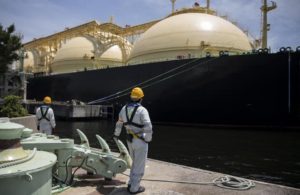 Major disconnects between prices and fundamentals don’t last forever. And when these disconnects revert back to the fundamentals, prices can move quickly and investors can make a lot of money. Typically, from late spring to early fall, natural gas production outpaces demand. This “injection season” is when natural gas storage levels build ahead of the higher demand winter season. When storage levels get too high, natural gas prices tend to fall. This is especially true when storage levels are high going into injection season. When that happens, investors can usually bet on soft natural gas prices for the rest of the year.
Major disconnects between prices and fundamentals don’t last forever. And when these disconnects revert back to the fundamentals, prices can move quickly and investors can make a lot of money. Typically, from late spring to early fall, natural gas production outpaces demand. This “injection season” is when natural gas storage levels build ahead of the higher demand winter season. When storage levels get too high, natural gas prices tend to fall. This is especially true when storage levels are high going into injection season. When that happens, investors can usually bet on soft natural gas prices for the rest of the year.
The inverse is usually true as well. When storage levels are low, especially headed into winter, natural gas prices are usually rising. This year, there was a fundamental disconnect between natural gas storage levels and natural gas prices. As we headed into withdrawal season, natural gas storage levels were below the bottom of the five-year average range. My expectation in that case would be that natural gas futures would be under upward pressure, especially for mid-winter delivery. Yet, natural gas futures for January and February delivery were trading at about $3 per million British thermal units (MMBtu). I warned that these prices didn’t reflect the increased risks of heading into winter with low inventories, and that many factors (a cold winter, hiccups in production, increased exports to Mexico) could cause a rapid rise in natural gas prices.
I noted in closing that natural gas was priced for perfection, adding:
“Investors in natural gas futures or in natural gas producers should watch this situation closely, as a disconnect may be developing between natural gas supply risk and price reality. Unless inventories bounce back into the normal range over the next few months, the risk of much higher prices by the end of winter will be significantly higher.”
Natural gas inventories didn’t bounce back:
Subsequently, the disconnect that I warned about in August is in the process of correcting. Natural gas for January delivery has now surged (as I write this) to $4.70/MMBtu — a nearly 60% rise since August (and a gain just today of 13%). Prices will likely remain elevated until inventories return to a normal range. In the case of an unusually cold winter, prices could surge much higher. With inventories as low as they are, the weather will be the most significant factor impacting natural gas prices until spring. In fact, this winter it will likely have a disproportionate impact.
But if you missed profiting from the natural gas disconnect, have no fear. The oil markets are currently setting up a similar disconnect, albeit one driven by different factors.
Source: “Why Natural Gas Prices Are Breaking Out?”, Forbes
